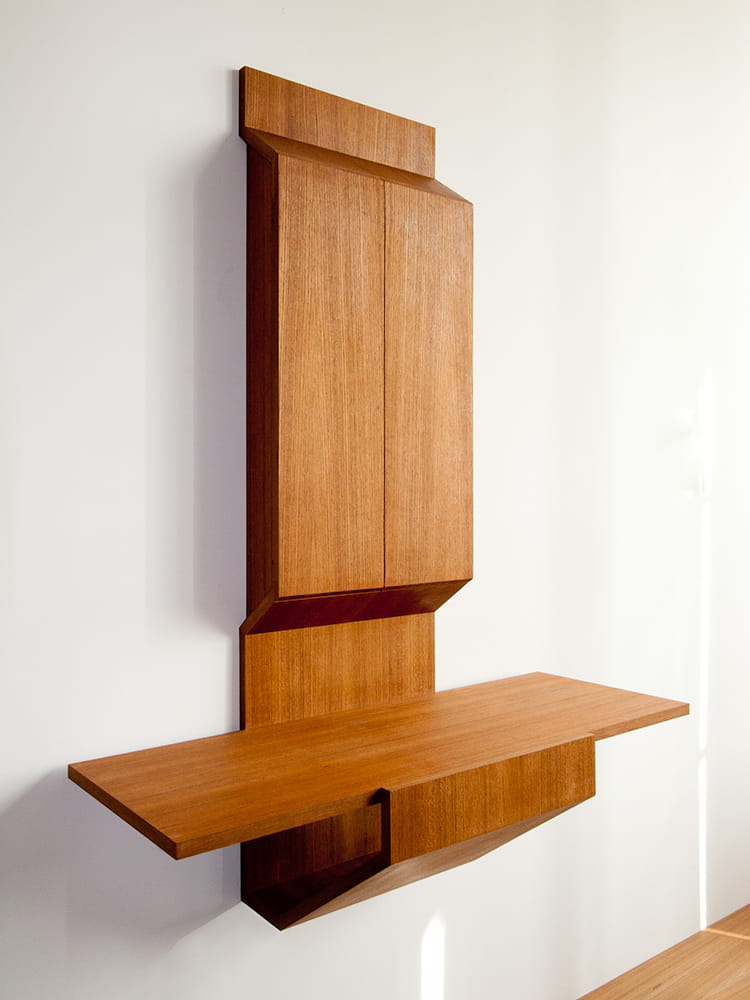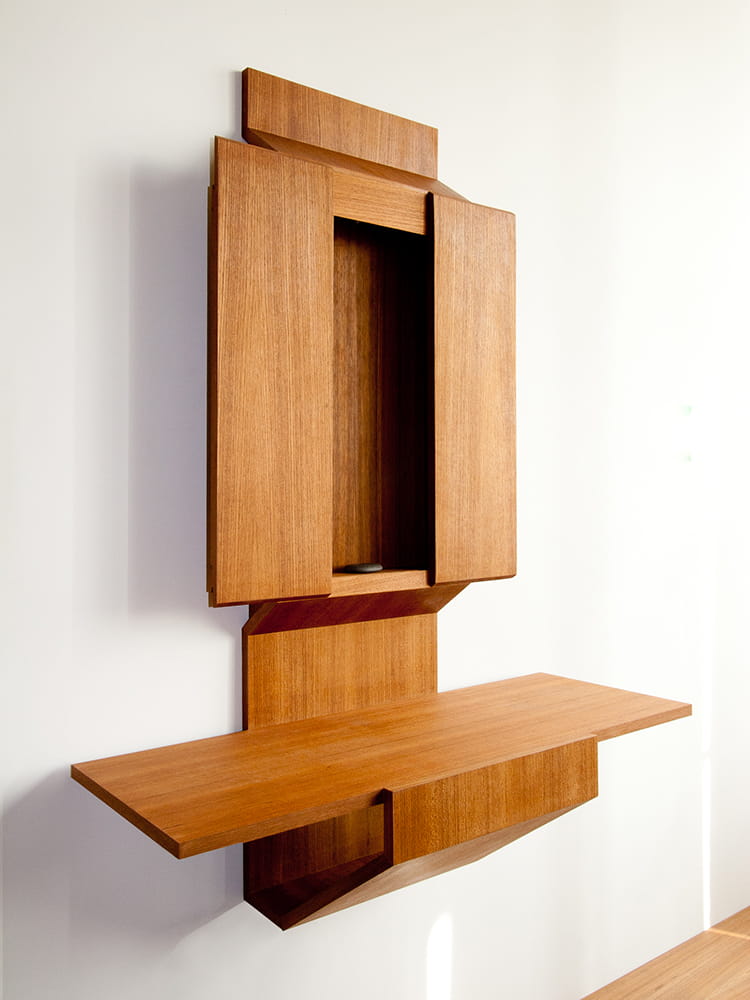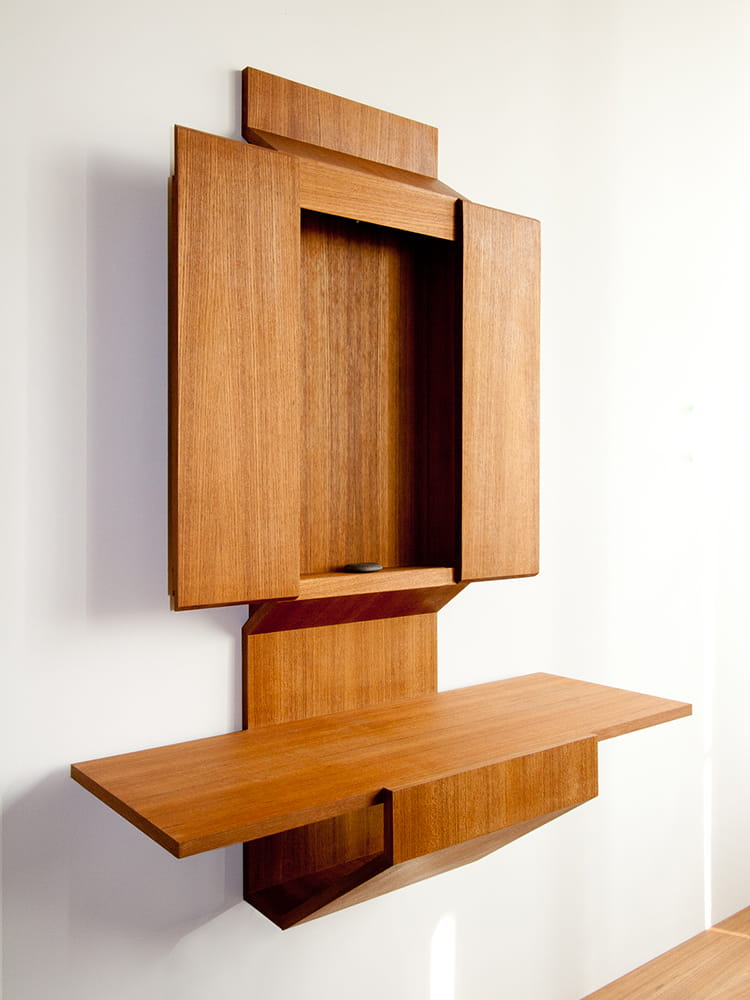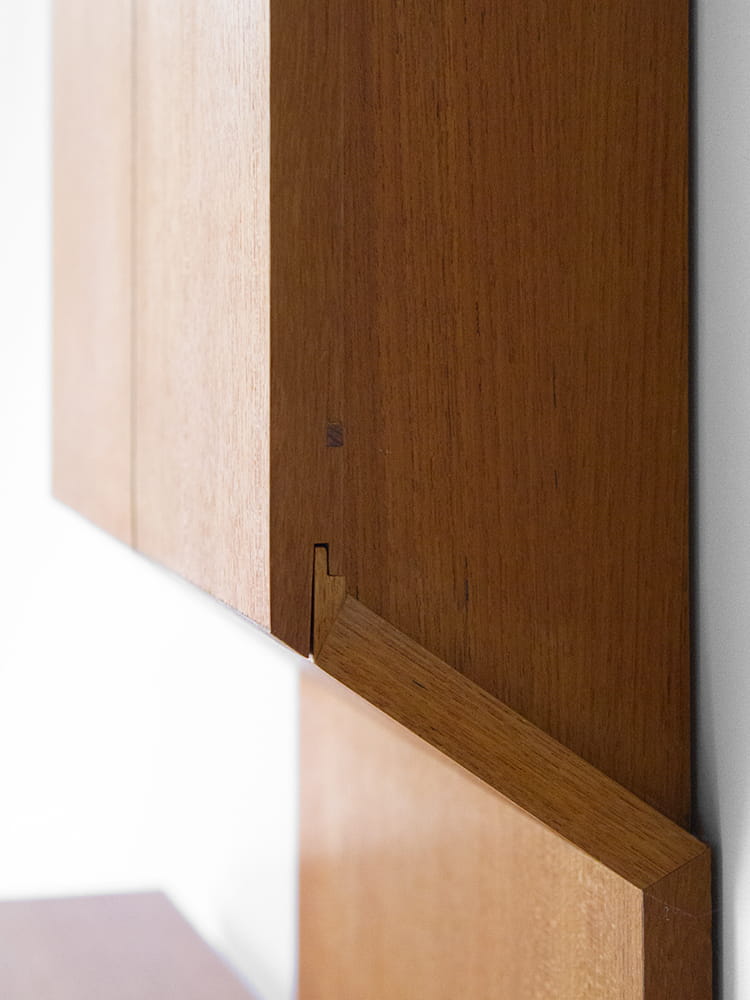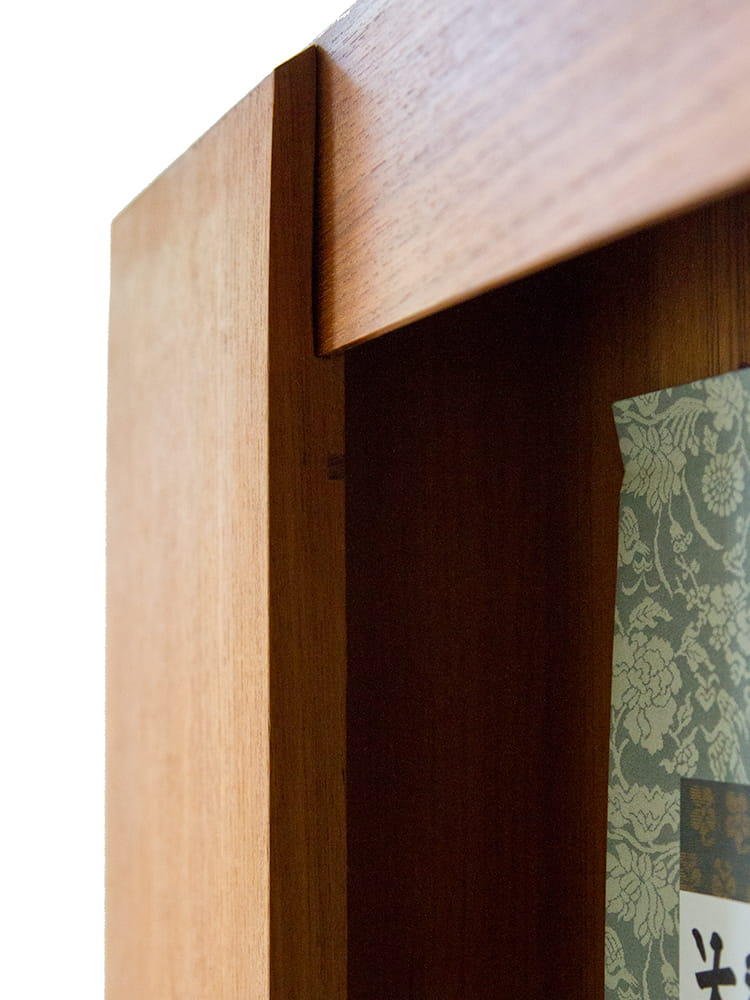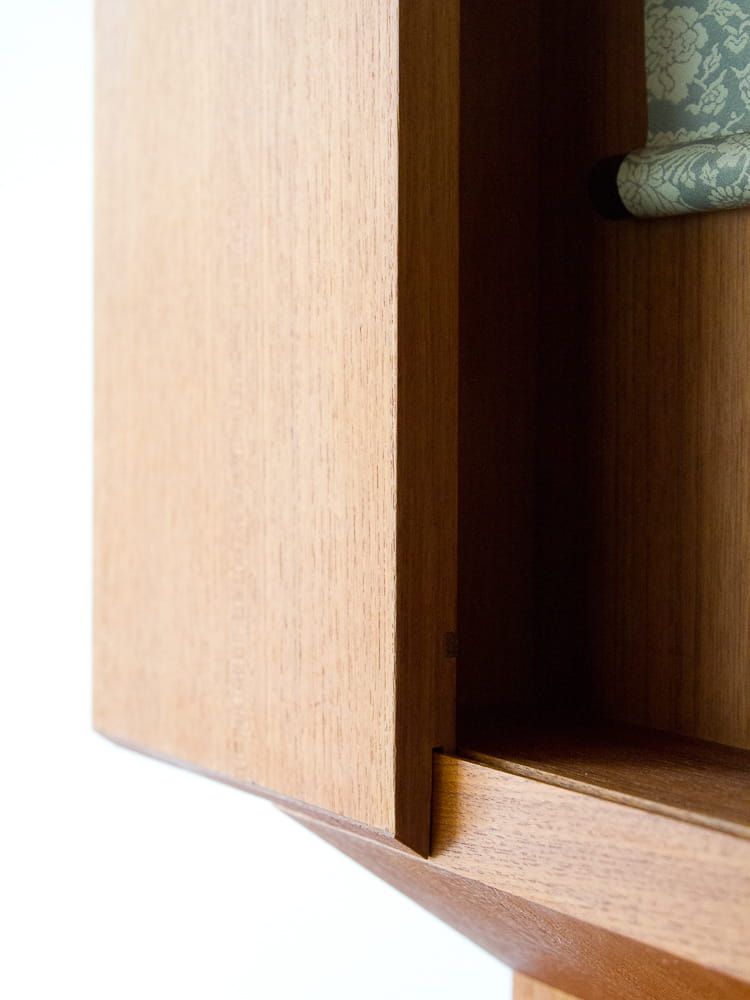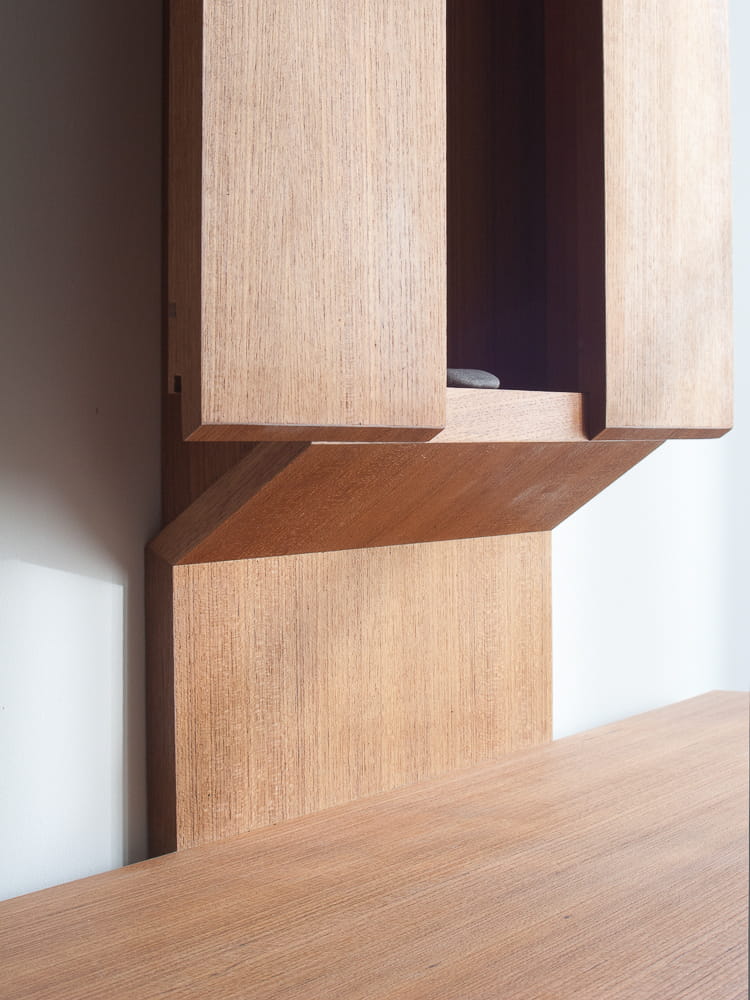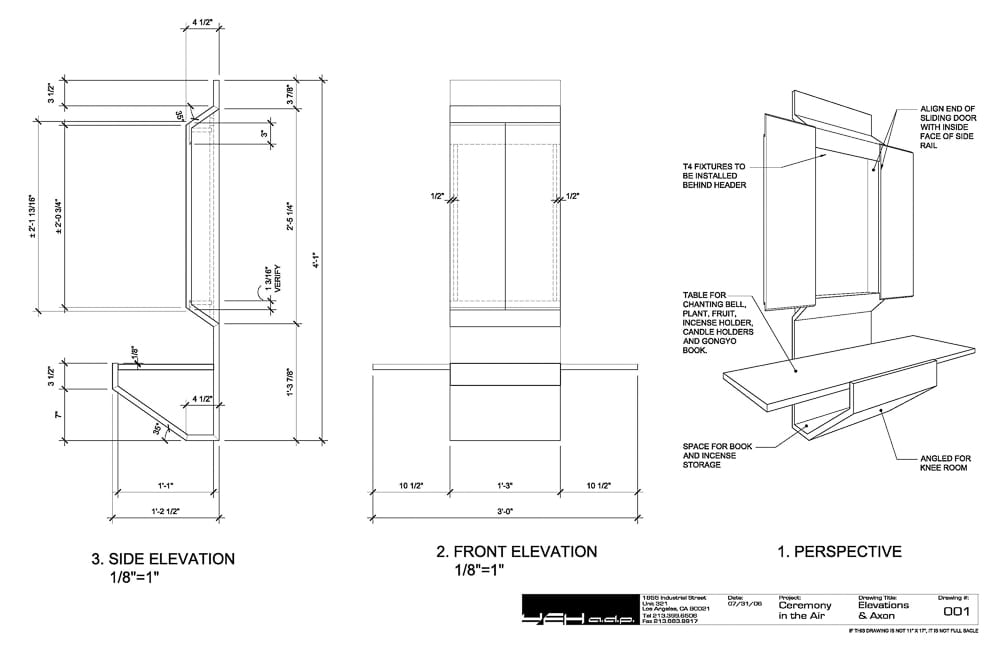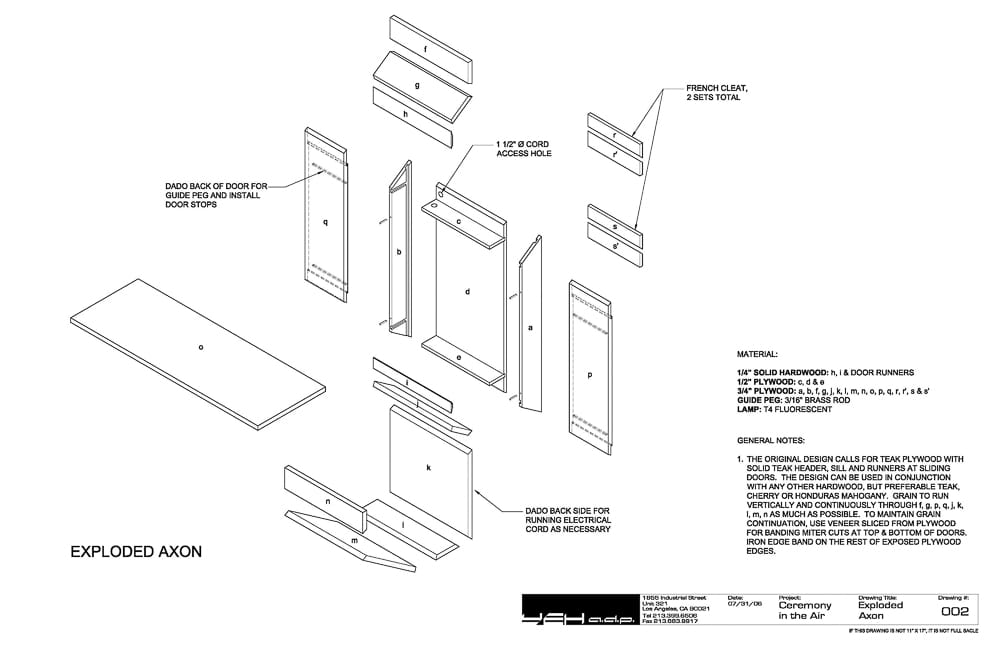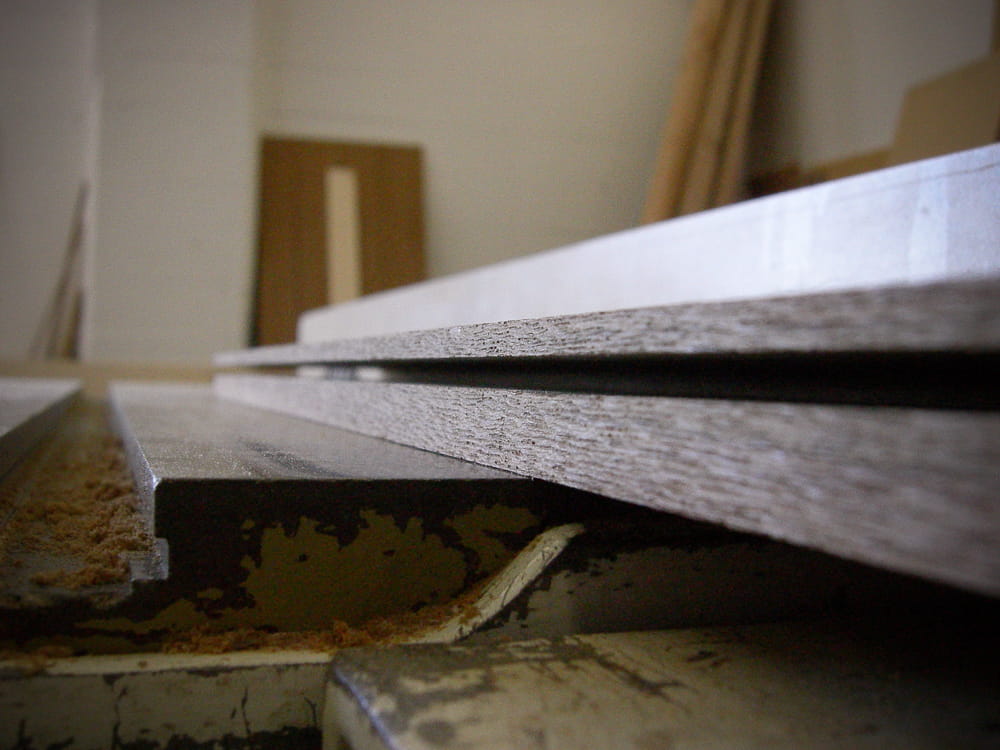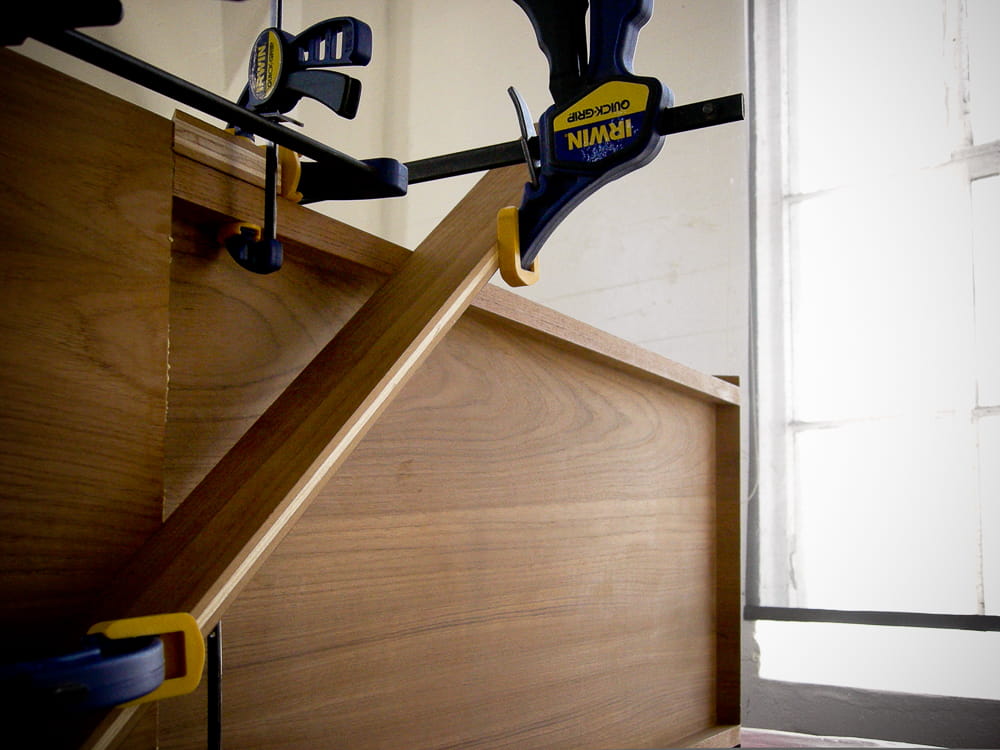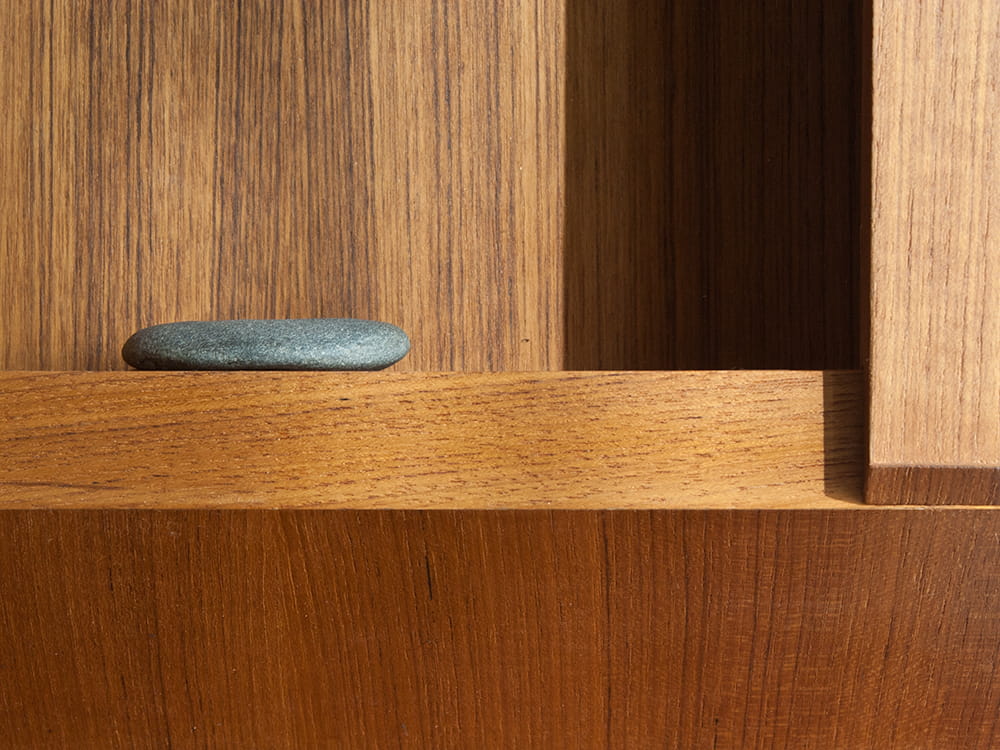Ceremony in the Air
2006
The Ceremony in the Air is a modern Buddhist altar. The primary function of this altar is to house a ritual mandala inscribed in sumi ink by a 13th-century Japanese Monk. The mandala is an abstract depiction of one’s enlightenment in the form of a calligraphic scroll. It serves as a focal point for observing one’s mind during the recitation of the Lotus Sutra.
The mandala is also a representation of the “Ceremony in the Air,” a powerful and transformative event that encapsulates the essence of the Sutra’s teachings. The event can be summarized as follows:
Shakyamuni Buddha (a.k.a. Siddhartha Gautama) rises into the air and opens a stupa, revealing Prabhūtaratna Buddha (a.k.a. Many Treasures Buddha), who has attained enlightenment before him. Shakyamuni then takes his place beside Prabhūtaratna. Countless bodhisattvas, disciples, heavenly beings, and other sentient beings of various realms gather in the air to witness this extraordinary event. The ceremony expands to accommodate and lift the vast common-people assembly into the air.
The Ceremony is highly symbolic. It conveys the timeless, universal, and inclusive nature of the Buddha’s wisdom and compassion and invites practitioners to elevate their understanding and perception, aligning with profound and universal truths. It serves as a metaphor for the spiritual ascent and the transcendence of worldly limitations.
Inspired by the Sutra’s depiction of the event, the Ceremony in the Air altar is installed above ground with two French cleats. The integrated shelf of the altar is intended for ceremonial instruments, whereas books and sutras can be stored in the lower compartment. The altar was designed and built in-house for a client with a large collection of modern Danish furniture. To exist harmoniously in the client’s environment, this altar is made of hand-selected teak hardwood and plywood. The wood grain book-matched and runs vertically and continuously, creating a wrapping effect.
Design, Fabrication & Installation:
Yi-Hsiu Yeh


